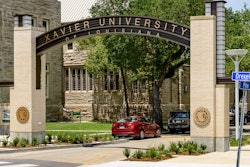RODERICK PAIGE
U.S. Secretary of Education, Dr. Roderick R. Paige sat down with Black Issues senior writer Ronald Roach and Washington correspondent Charles Dervarics to discuss a wide-ranging set of issues related to the Bush administration’s education pledge to “Leave No Child Behind.” Paige was confirmed by the U.S. Senate as the seventh Secretary of the Department of Education on Jan. 20, 2001, following the inauguration of President Bush.
Secretary Paige’s appointment to the Bush Cabinet proved to be the most emblematic of the “compassionate conservatism” brand of politics practiced by President Bush. After a year on the job, Secretary Paige expressed confidence in the administration’s ability to deliver on their pledge, which speaks directly to the issue of class and ethnic disparities in the educational performance of American children.
BI: What were your goals upon becoming secretary of education, and after a year in office, what do you think you have accomplished so far?
RP: My view is that education in our country is a key issue with respect to our economic well-being as a nation relative to our European, Asian and African neighbors. I think it is a security issue of the first order. I just hold education on a high pedestal as a determiner of national well-being. Also, the well-being of the various ethnic and racial groups in America. And it’s even more important now than years ago because … where resources such as land, oil and cotton (were) the foundation of our economy, today ideas, imagination, solutions to problems have that same type of economic and social value. And the foundation of all that is education. I think it’s inescapable.
So my goal, one of my goals as secretary of education, is to assist in changing the culture of education so that it becomes more product-oriented instead of process-oriented, so that it actually works. A lot of good things have happened. A lot of kids are being successful. But I think it’s pretty clear that a large number of people are not. And my specific interest is in being of assistance to those that are not. It is the department’s biggest mission, and that is to provide equal access to a quality education for disadvantaged people.
What have I accomplished in the year that we have been here? The thing that I have accomplished has been the Elementary and Secondary Education Act (ESEA) (which) has been reauthorized. I think it was reauthorized in a way that is quite different. It is going to change the culture of public education. Education is not ever going to be the same as a result of this bill.
So this bill, I think, is kind of a lesson on what other things are going to be like. Now people have some interest in the fact that we started with this bill. The reason that we started with this is because of timing. It was time to reauthorize ESEA. The reauthorization of the Office of Education and Research Improvement (OERI), we’re all gearing up for that now. I understand the process now. I know how it works; I have built a lot of relationships on the Hill and in various communities. I think that a lot has been accomplished. But one of the most important things that has been accomplished, we’ve put together a staff here now that I think is superb. We’ve got great people in this organization.
BI: This leads to my second question. A number of states and school districts around the country, have been adopting approaches to bridge the achievement gap between disadvantaged minority students and White students, or high-achieving students. How is the administration supporting that effort by states and school districts that want something done about this?
RP: First of all, the president is a leader in that. This is a very important point. This is the first president who has taken on that challenge directly. Listen to his language … He says, “Close the achievement gap.” What this means is that those students who have not been doing well, he’s putting very strong emphasis there. Reading is one of the tools that he is using to help close the achievement gap. He’s tripled the funding in reading. He also directed this funding toward processes that are really going to work, not guess work. We’re using science; we’re using information from … the NIH (National Institutes of Health), NCES (National Center for Education Statistics) — who’ve been studying reading for 25 years. We know how to teach reading now. Right now, our fourth graders in the United States, about 30 to 35 percent of them can read at a basic level.
Those that can’t … and guess who they are … they are minority and disadvantaged students — that’s what’s got to be fixed, and the president has taken that on directly. And the ESEA is targeted more sharply towards helping those who are most in need. So he’s the kind of leader, listen to the rest of his language: “Reading is the new civil rights.” Listen to the rest of his language: “The soft bigotry of low expectations.” That’s tough language that nobody seems to be paying much attention to. He’s saying that he intends to do a lot about the educational goals of those who need it most, and we know who those people are. This president is very courageous in that regard.
BI: This White House also has pushed the idea of college promotion, or college as a goal for the Hispanic community. Are we going to see some of this for African Americans and other disadvantaged groups?















